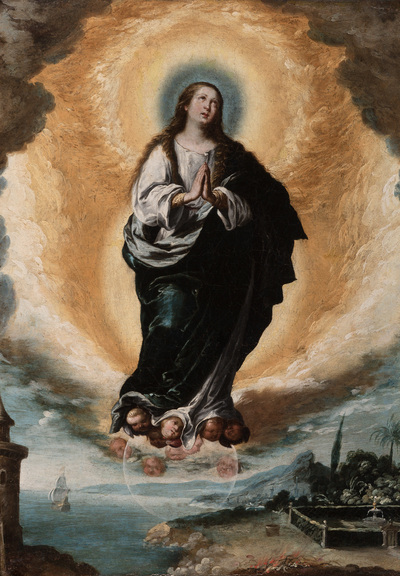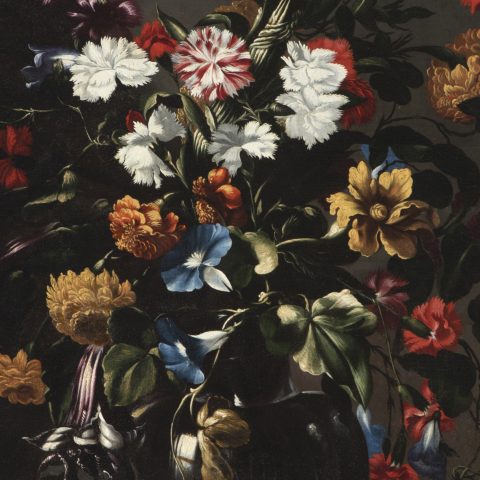The cult of the Virgin Mary has played a major role within the Christian religion and is also one of the most represented throughout the history of art.
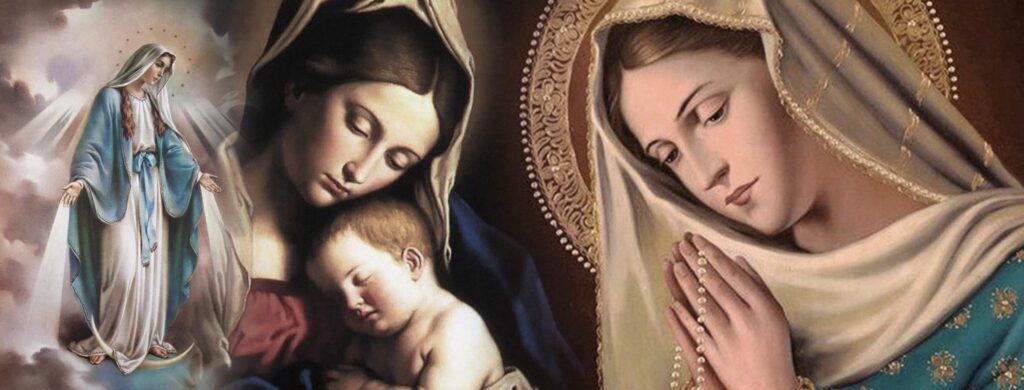
The complexity of the Marian cycle was expressed in a multitude of Marian invocations, each of which acquired an iconographic convention that allowed the faithful to identify them. From the Middle Ages, its representation in art experienced a notable boom, especially thanks to the proliferation of writings related to the Virgin on which artists of all ages relied to capture the multiple episodes of her life. Undoubtedly, the diversity of literary sources, such as the apocryphal Gospels, the Golden Legend, and the books of mystical thinkers such as San Bernardo, San Buenaventura and Santa Brígida, have constituted a fundamental pillar in the construction of Marian iconography and the way in which the art has reflected the identity and character of the Virgin.
Next, we provide you with a small guide to its most common and representative attributes, as well as the symbols they hide behind them:
The cloak: It is a sign of authority and an attribute of power. Many times, Mary extends it to shelter the faithful under it, crosses it on her chest to also indicate her virginity or carries it loose and dragged as a sign of mourning. Usually the color of the cloak has been blue as a symbol of eternity and protection. However, there are variations where she is represented with the red cloak symbolizing the principle of life
The tunic: Due to its wide shapes that cover the body, it is a symbol of modesty, just as the tight high waist is a symbol of virginity. As in the representation of the mantle, its color may vary, the most common being red. However, and especially in the Sevillian school of the seventeenth century, the color white was imposed as a symbol of purity
Crown of twelve stars : The star refers to the Star of David and the number 12 refers to various biblical passages. Also, it is the number of eternal perfection.
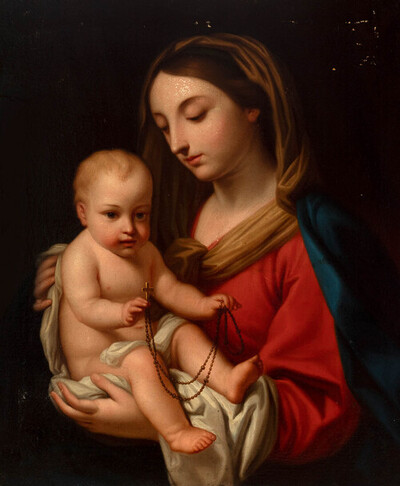
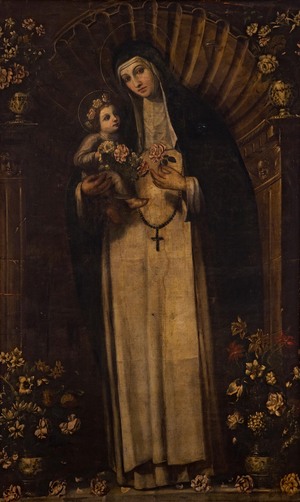
Crescent: In contrast to the Sun, the moon symbolizes feminine divinity and fertility. Placed under the feet of the Virgin, it represents the triumph of Christianity over Islam.
Heart with seven daggers : It symbolizes the seven pains that Mary has nailed in her heart: pain, anguish, anguish, consternation, martyrdom, wound and consolation. All of them are related to the suffering of Maria, who as a mother felt the fateful fate of her son.
The lily: As a symbol of purity, chastity or virginity, it is the most used iconographic reference in all kinds of representations of the Virgin (particularly in the Annunciation scene). Mary’s triple virginity (“before, during and after childbirth”) is usually indicated by the presence of three lilies.
The Rose: It is usually related to the Virgin as a symbol of sacrifice and of the blood shed by Christ. Likewise, a correlation is often established between the two, the rose being the queen of all flowers and the Virgin of all virtues.
The Lilies : Like the lily, the white color of the lilies tells us about the virginity of Mary and the conception free from all sin.
The Carnation: It symbolizes the purest love since it is believed that the first carnation sprouted from the tears of Maria when she saw her son carrying the cross.
The source: This symbol applied to Mary is interpreted as a life-giving and purifying element. Likewise, it alludes to the origin of creation since, as the mother of Jesus Christ, she is also the mother of humanity.
The palm : The Virgin is symbolized by the palm tree since she is the image of the triumph of God’s salvation, of his hope and of his justice.
The Granada : In Christian art, the pomegranate is a fruit of great symbolism. On the one hand, it represents fertility, as it is one of the fruits that contains the most seeds. Likewise, his presence in the hands of the Virgin also refers to his chastity and the union of the Church.
The cedar: It evokes the greatness and incorruptibility of Mary.
The orange: this futa when it is represented in the hands of Mary symbolizes salvation.
